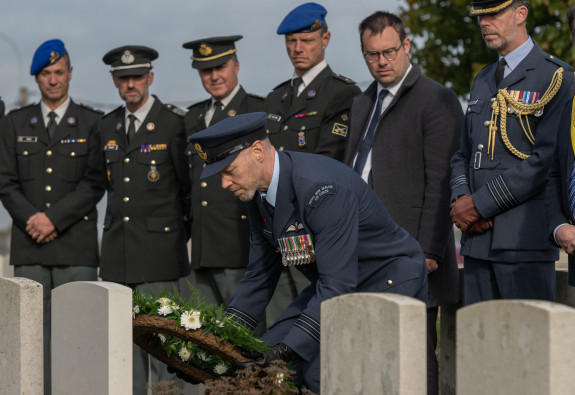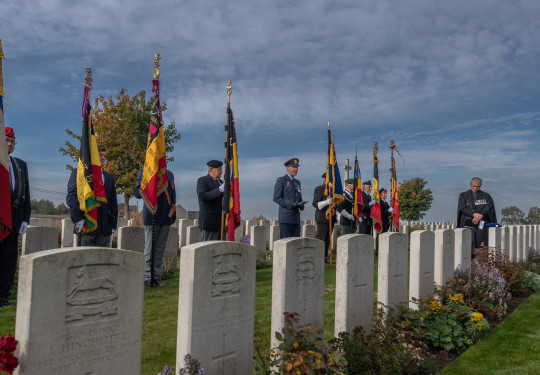Rededication ceremony held in Belgium for WWI New Zealand Soldier
A New Zealand World War I soldier, whose burial location was only discovered a century after his death, has had his final resting place acknowledged during a rededication ceremony in Belgium.
21 October, 2022
Captain Ernest Charles Parry, 16th (Waikato) Company, 1st Battalion, Auckland Infantry Regiment, was killed on 6 October 1917 as he and another soldier withdrew from the Battle of Broodseinde.
Mystery surrounded his death and final resting place until tireless efforts by retired Belgian Navy Lieutenant Commander and Honorary Navy Captain for the Royal New Zealand Navy Freddy Declerk MNZM OAM, now of the New Zealand Pilgrimage Trust, who commenced the initial research, and New Zealand Defence Force (NZDF) historian Matthew Buck, who provided the catalyst for follow-up investigations, determined Captain Parry’s final resting location.
Royal New Zealand Air Force (RNZAF) Wing Commander Gareth Russell said he was deeply moved as master of ceremonies at Captain Parry’s rededication service, which took place at Dochy Farm New British Cemetery, Langemark-Poelkapelle, West-Vlaanderen, near Ypres.
“For more than 100 years Captain Parry lay as one of the myriad of unknown soldiers of WWI and on 12 October 2022, with great pride and honour, it was my duty to officially unveil Captain Parry’s named headstone.”

Rededication ceremony for Captain Ernest Charles Parry at Dochy Farm New British Cemetery, Langemark-Poelkapelle, West-Vlaanderen, in Belgium. (Credit: Eric Compernole)
The service was attended by New Zealand Ambassador to Belgium, Her Excellency Diana Reaich, as well as representatives from the Commonwealth War Graves Commission (CWGC) and Belgian locals who attended as a mark of respect.
Mr Buck said it was a rare and special thing to discover where a missing WWI soldier was buried, but that it was not the only reason he found this case to be so moving.
“As I got to know Captain Ernie Parry a little better, it was the profound effect that his death had on his family which really began to stand out. Ernie’s widow Mary, it became clear, had to carry the heavy burden of bringing up their two young sons on her own,” he said.
“We were devastated to learn that one of those boys, Flight Sergeant Joseph Stewart Parry, was declared missing believed killed while serving with the RNZAF during World War II. It brought home to us the scale of the loss which was experienced by so many New Zealand families during those two terrible conflicts.”
CWGC representative Geert Bekaert said it was an “absolute privilege” to formally recognise the grave of Captain Parry.
“The CWGC ensures all those who served and fell are commemorated by name and we will care for his grave, in perpetuity.”
There are 6290 members of the New Zealand Armed Forces who served during WWI listed on memorials erected to those with no known graves. Given the considerable uncertainty typically surrounding such cases, a positive identification based purely on archival research is extremely rare.
The CWGC said at the time of the discovery that Captain Parry’s was the first successful identification case for a New Zealand casualty that it was aware of.
